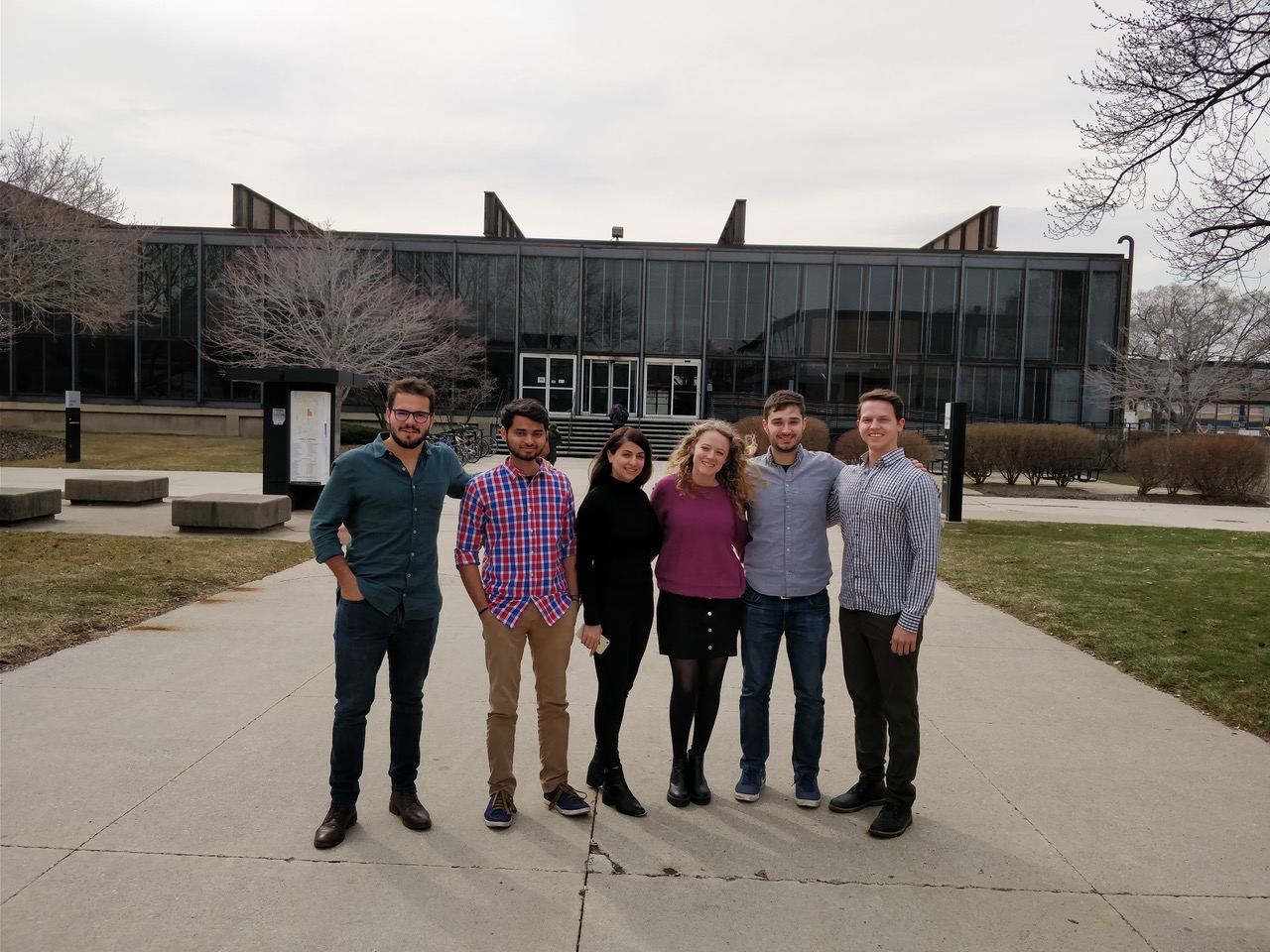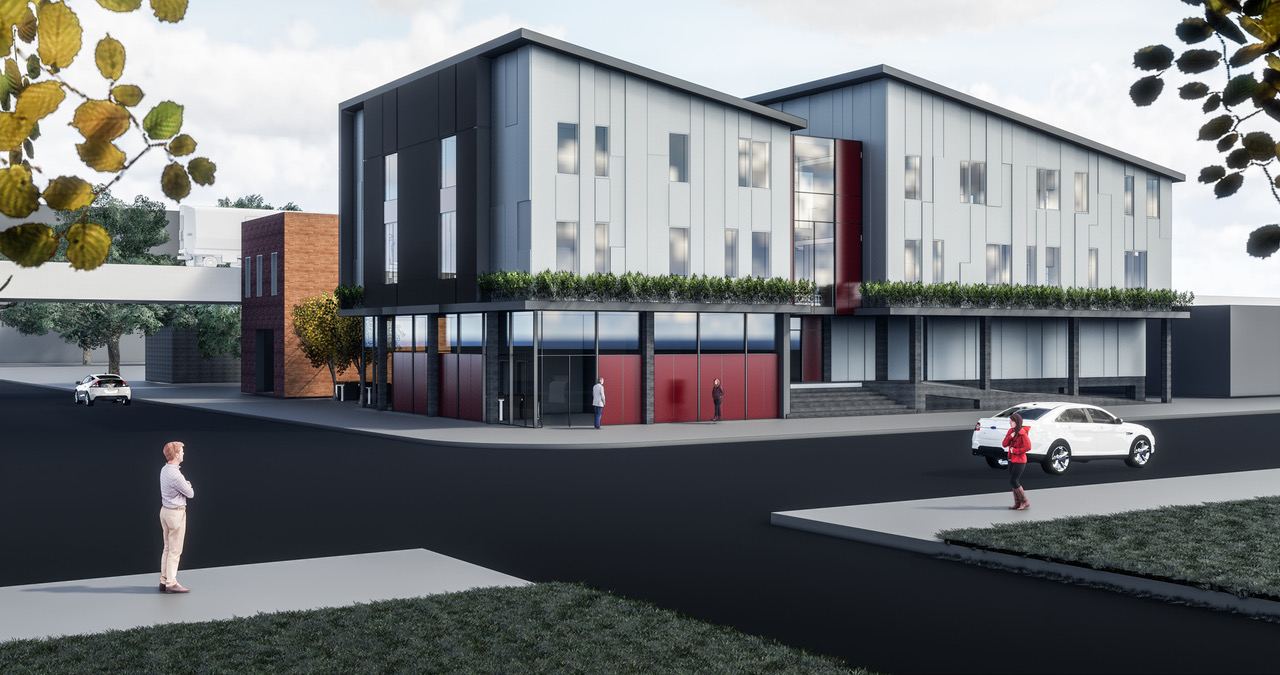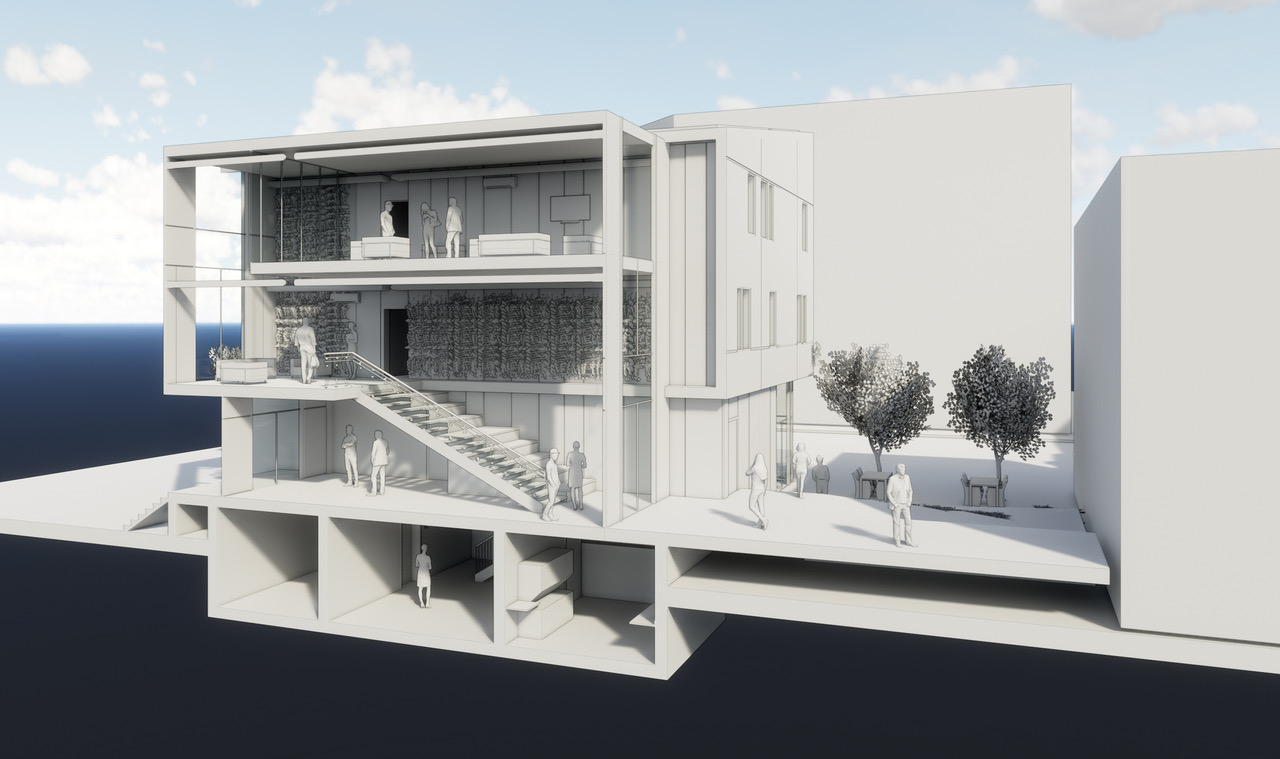An interdisciplinary team of Illinois Tech students from the Armour College of Engineering and the College of Architecture finished second in the Small Multifamily Housing category at the 2018 Department of Energy (DOE) Race to Zero Student Design Competition held April 20–22 at the National Renewable Energy Laboratory (NREL) in Golden, Colorado. This was the third year in a row that an Illinois Tech team led by students and faculty from the Department of Civil, Architectural, and Environmental Engineering (CAEE) placed second in their competition category.

This year’s team designed their project, InterTech, to provide off-campus housing for graduate students at Illinois Tech, situated between Illinois Tech’s Mies Campus and the Chicago Loop at 2401 South State Street. The team pursued energy efficient design strategies designed to meet DOE Zero Energy Ready Home requirements while merging with a creative design that promotes a new type of student housing for the area, overcomes site challenges, and meets the Chicago Building Code. Their work resulted in a design that was net-positive energy, meaning that it is predicted to generate more energy through on-site solar PV panels than it would consume on an annual basis. The team achieved this goal through an integrated architectural and engineering design approach that included an energy efficient ground source heat pump with variable refrigerant flow units, outdoor air delivered through dedicated energy recovery ventilators, a naturally ventilated underground garage, an airtight building enclosure with high thermal resistance, and high efficiency equipment, appliances, and fixtures.

The InterTech design team included the following students:
- Brett Horin (ARCE 2nd year), team leader, architectural design
- Esther Rodriguez (MAE 2nd year), engineering lead, mechanical and PV system design
- Jaime Marin (MAE 2nd year), PV system design and energy modeling and analysis
- Ajay Kotur (ARCE 1st year), mechanical design
- Eric Wright (MAE 2nd year), architectural design
- Narjes Abbasabadi (ARCH Ph.D. candidate), architectural design
- Vitoon Jittasirinuwat (MAE 2nd year), architectural design
- Sergio Arias Solorzano (ME 2nd year), construction engineering and management

The team was advised by Edoarda Corradi Dell’ Acqua, adjunct professor in CAEE, as part of her classes CAE 556 and CAE 557 Net Zero Energy Home Design Competition I and II, with co-advising from Brent Stephens, associate professor of architectural engineering in CAEE. Other Illinois Tech faculty members who provided invaluable guidance included Mohammad Heidarinejad, Laurence Rohter, Raymond Lemming, Eva Kultermann, and Carlo Parente.
The team received financial support to attend the competition from the ASHRAE Illinois Chapter, Imbert International, Inc., the Armour College of Engineering, and the Department of Civil, Architectural, and Environmental Engineering. The team also received technical guidance from project partners Passive House Institute US (PHIUS), Diligent Design Group, Soltec Engineers, and Desapex.
The Race to Zero is an annual competition, open to students and faculty from any interested collegiate institution. The fifth annual Race to Zero competition includes a new commercial building design contest in addition to the residential building contests, giving teams many options of building types as the focus of their design challenge. The competition challenges collegiate teams to apply sound building science principles to create cost-effective, market-ready designs that meet DOE’s Zero Energy Ready Home program requirements. Students from 40 teams representing 34 collegiate institutions were selected to participate in the on-site competition, with eight teams competing in each of the five main project categories.
The teams’ continued successes in this competition clearly demonstrate that Illinois Tech is one of the top universities in the nation for integrated architectural and engineering design.



